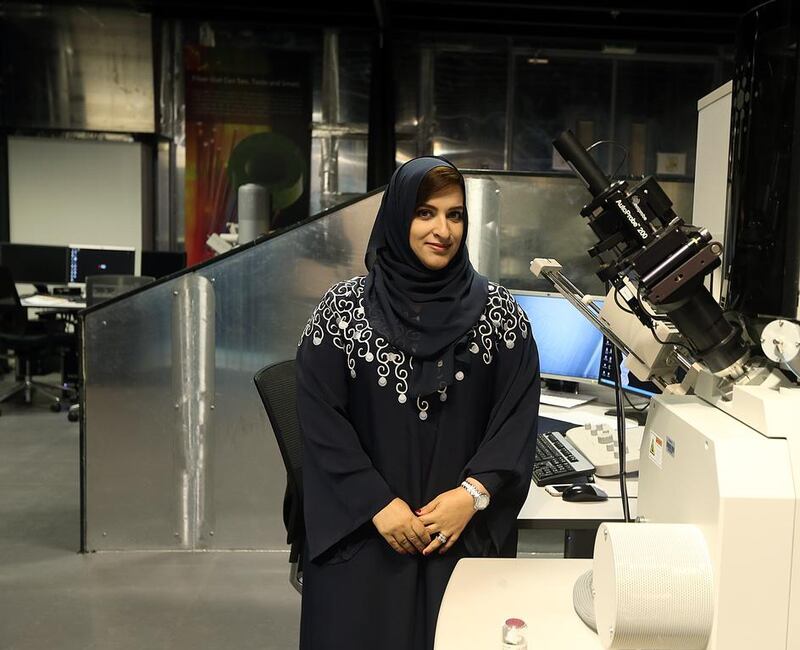It is also a component of countless artificial substances, including plastics and cleaning fluids.
In fact, it would be much easier to list the things that do not contain carbon than to catalogue those that do.
In recent decades, chemists have highlighted a string of new pure carbon structures, discoveries that could lead to many new applications for this most versatile of elements.
Among the most exciting of these are carbon nanotubes, which, as their name suggests, are tubular structures made solely of carbon atoms.
Their high electrical and thermal conductivity, especially in single-layer forms, are among their key properties.
Researchers at the Masdar Institute of Science and Technology have published findings that could increase the uses of the structures.
The starting point for their work are carbon nanostructures produced by the American defence and aerospace company, Lockheed Martin.
In a method that took a post-doctoral researcher at the Masdar Institute, Dr Hammad Younes, six months to perfect, the material was mixed in with water to which a surfactant had been added. The mixture was mixed and filtered so that a damp paper was left.
Heating resulted in a dry paper that had remarkable properties.
Compared with sheets of the material as it was originally fabricated, the density and the electrical conductivity was doubled, while tensile strength was up by about two thirds.
“The important factor behind the alignment is the novel formula, or ‘secret recipe’, that Dr Hammad has developed to fabricate the buckypaper,” said Dr Amal Al Ghaferi, an associate professor of mechanical and materials engineering, also one of the report’s co-authors.
These sheets of buckypaper have a wide array of potential applications.
Thanks to their high electrical and thermal conductivity and super mechanical properties, researchers say they could create ultralight composite materials with uses as diverse as creating more powerful batteries to lightning-strike protection in aeroplanes.
Carbon nanotubes are just one of a number of important carbon-based structures discovered over the past few decades.
Back in 1985, a group of researchers – some of whom won a Nobel Prize for their efforts – discovered fullerenes, or spherical structures made up of scores of carbon atoms.
The arrangement of the atoms gives a shape very similar to a circular football, albeit at a molecular scale.
Then, six years later, the first report of carbon nanotubes was published.
In 2004 came another major discovery: graphene, which is made up of sheets of carbon one layer thick that, like carbon nanotubes, conduct electricity and heat well. For many researchers, this looked like a more promising substance to work on and, according to materials scientist Prof Yanqui Zhu, much research interest migrated from carbon nanotubes to graphene.
“The hype moved to graphene in the past 10 years,” said Prof Yanqui, professor of functional materials at the University of Exeter in the United Kingdom.
Few people have spent more time researching these various forms of carbon than Prof Yanqui.
In 1992, he became the first PhD student in China to work on carbon nanotubes.
He said that real-world applications of carbon nanotubes remain in a very small scale to date.
“The products people produce now are not in mass production. Maybe in some niche areas, they try to demonstrate it’s working,” Prof Yanqui said.
Although the hype that surrounded carbon nanotubes earlier on may have passed, many scientists, in the UAE and elsewhere, are intent on finding commercially valuable ways in which they could be used.
Prof Yanqui, who previously worked with the late Prof Harry Kroto, one of the three people who shared the Nobel Prize for discovering fullerenes, said nanotubes could be used in ceramics to make them more difficult to break.
These could lead to some novel applications.
“If you could make it much tougher, they could be used for plates for body armour,” he said.
“Police, soldiers, they wear body armour that could be ceramic. If you can make it tougher, it can absorb more energy, or you can reduce the thickness to reduce weight and make it more comfortable. That’s the potential.”
In Abu Dhabi, the researchers are focused on trying to further develop uses for the high-conductivity paper they have developed.
Although the funding period for the current research is completed, Dr Al Ghaferi said the researchers were still interested in testing fabricated material for many applications.
Other researchers involved in the recent work were Dr Rashid Abu Al Rub, an associate professor of mechanical and materials engineering, Masdar Institute PhD student Mahfuzur Rahman and former Master’s student Ahmed Dalaq.
“We are trying to receive funding from different agencies to improve our buckypaper and optimise the fabrication process. We still have many ideas we’d like to test on this super material,” Dr Al Ghaferi said.
“We think that with the right industrial partner, it will not take long to scale up the process because our fabrication process is simple and thus easily scalable.”
Prof Yanqui described working on carbon nanotubes as “sometimes frustrating” and said the field had seen “so many hypes”.
But the potential uses of these structures mean that they are still a focus of interest.
“There are some challenges but it’s still very worth working on,” he said.
newsdesk@thenational.ae







